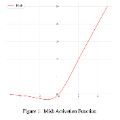To verify safety and robustness of neural networks, researchers have successfully applied abstract interpretation, primarily using the interval abstract domain. In this paper, we study the theoretical power and limits of the interval domain for neural-network verification. First, we introduce the interval universal approximation (IUA) theorem. IUA shows that neural networks not only can approximate any continuous function $f$ (universal approximation) as we have known for decades, but we can find a neural network, using any well-behaved activation function, whose interval bounds are an arbitrarily close approximation of the set semantics of $f$ (the result of applying $f$ to a set of inputs). We call this notion of approximation interval approximation. Our theorem generalizes the recent result of Baader et al. (2020) from ReLUs to a rich class of activation functions that we call squashable functions. Additionally, the IUA theorem implies that we can always construct provably robust neural networks under $\ell_\infty$-norm using almost any practical activation function. Second, we study the computational complexity of constructing neural networks that are amenable to precise interval analysis. This is a crucial question, as our constructive proof of IUA is exponential in the size of the approximation domain. We boil this question down to the problem of approximating the range of a neural network with squashable activation functions. We show that the range approximation problem (RA) is a $\Delta_2$-intermediate problem, which is strictly harder than $\mathsf{NP}$-complete problems, assuming $\mathsf{coNP}\not\subset \mathsf{NP}$. As a result, IUA is an inherently hard problem: No matter what abstract domain or computational tools we consider to achieve interval approximation, there is no efficient construction of such a universal approximator.
翻译:为了验证神经网络的安全和稳健性,研究人员成功地应用了抽象解释, 主要是使用间隙抽象域 。 在本文中, 我们研究神经网络校验时间间隔域的理论力量和限制 。 首先, 我们引入了间距通用近似( IUA) 理论。 IUA 显示, 神经网络不仅可以近似我们数十年来所知道的任何连续功能$f$( 通用近似) 。 此外, 我们也可以找到一个神经网络, 使用任何有节奏的激活功能, 其间距是任意近距离接近 $( 在一组输入中应用 $f$) 的设定语义。 我们称之为近距离近距离近距离近距离近。 我们的理论将最近Baaader 和 al. (2020年) 的结果从ReLUs 到我们称之为可熔化功能的丰富的激活功能类别。 此外, IUA 理论显示, 我们总是可以在 $\\ elexnforal yal oral 范围下构建坚固的神经网络, 直径直径直径直径直径直径的网络的计算复杂直径分析。





